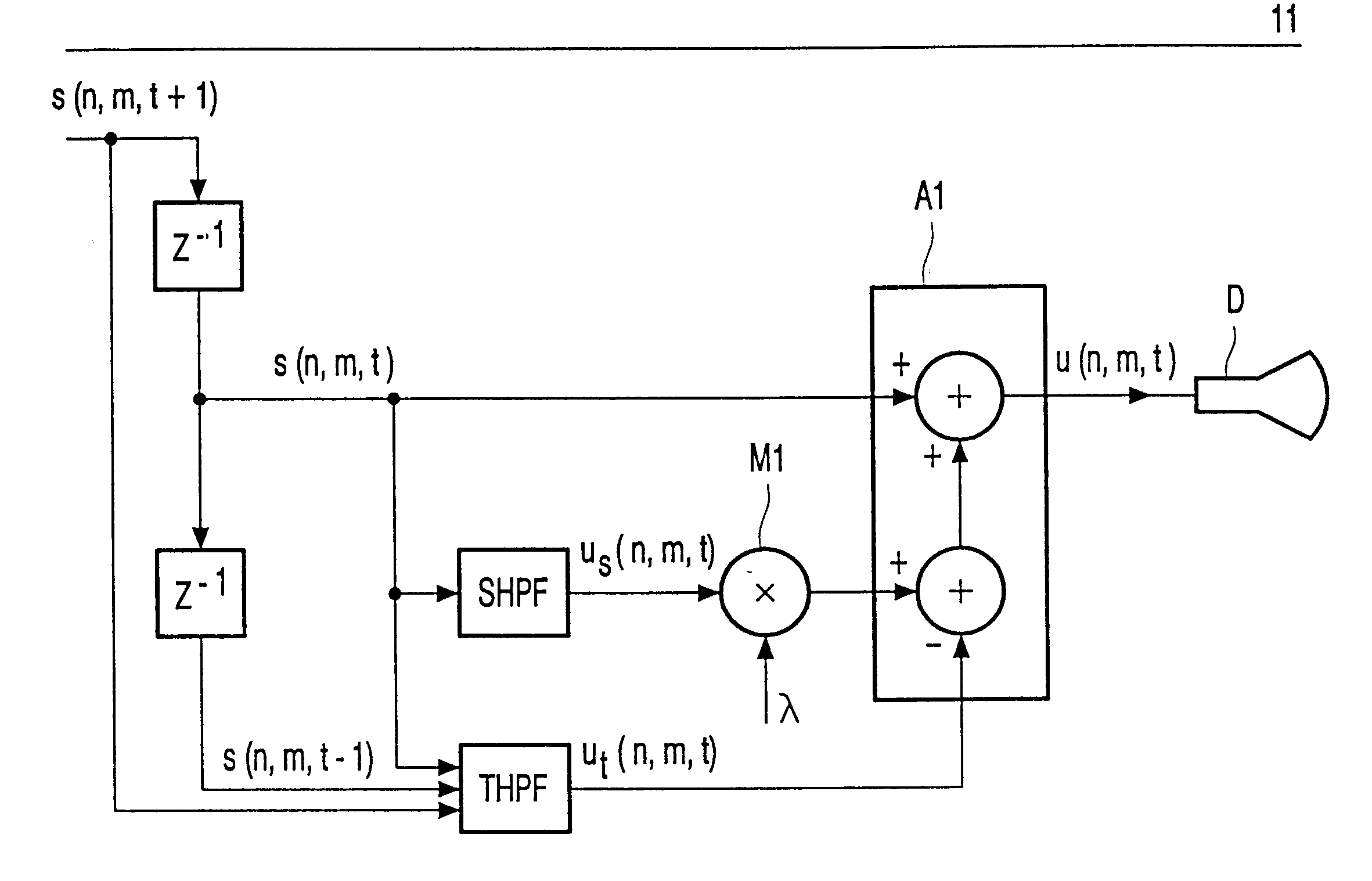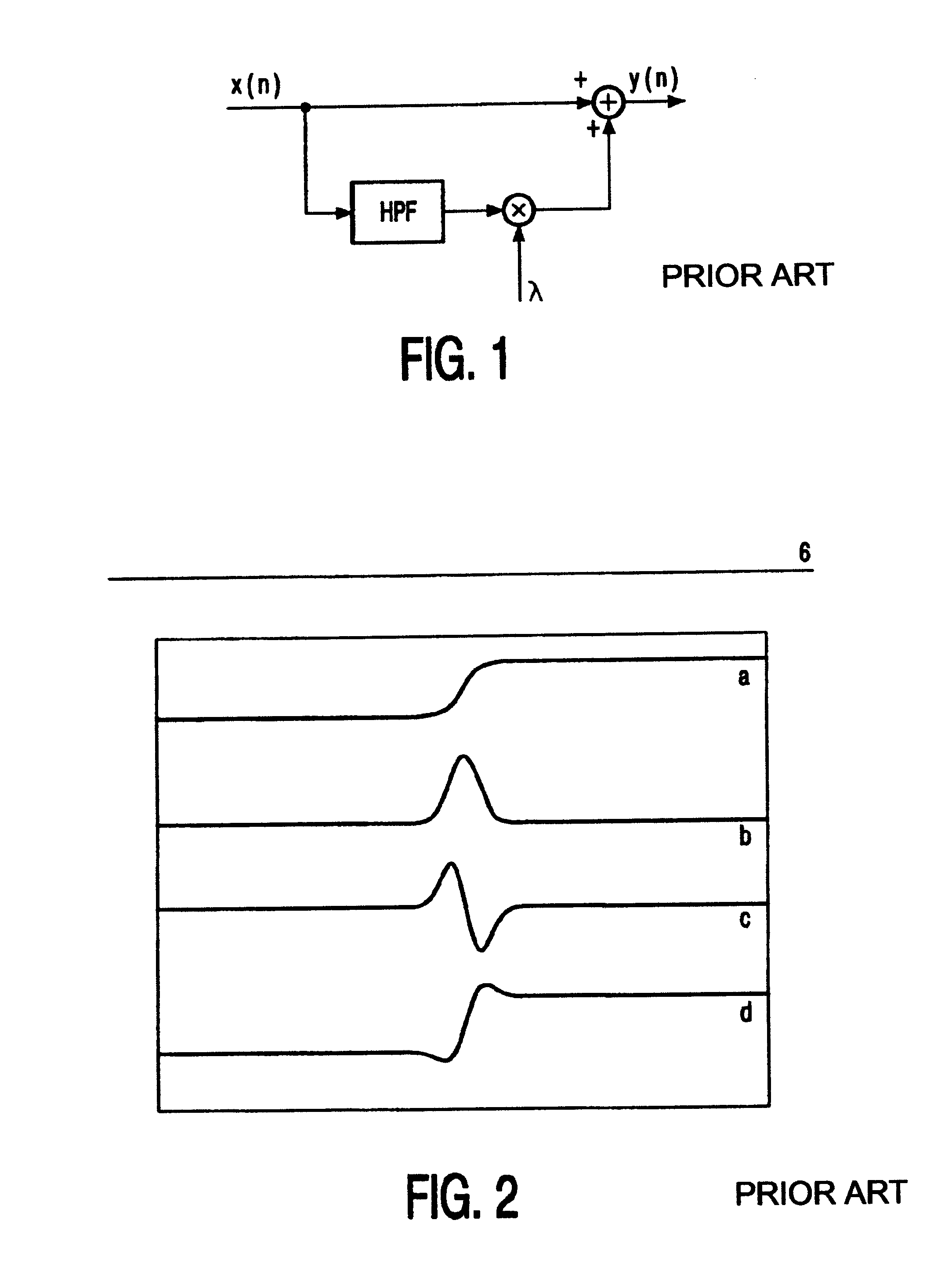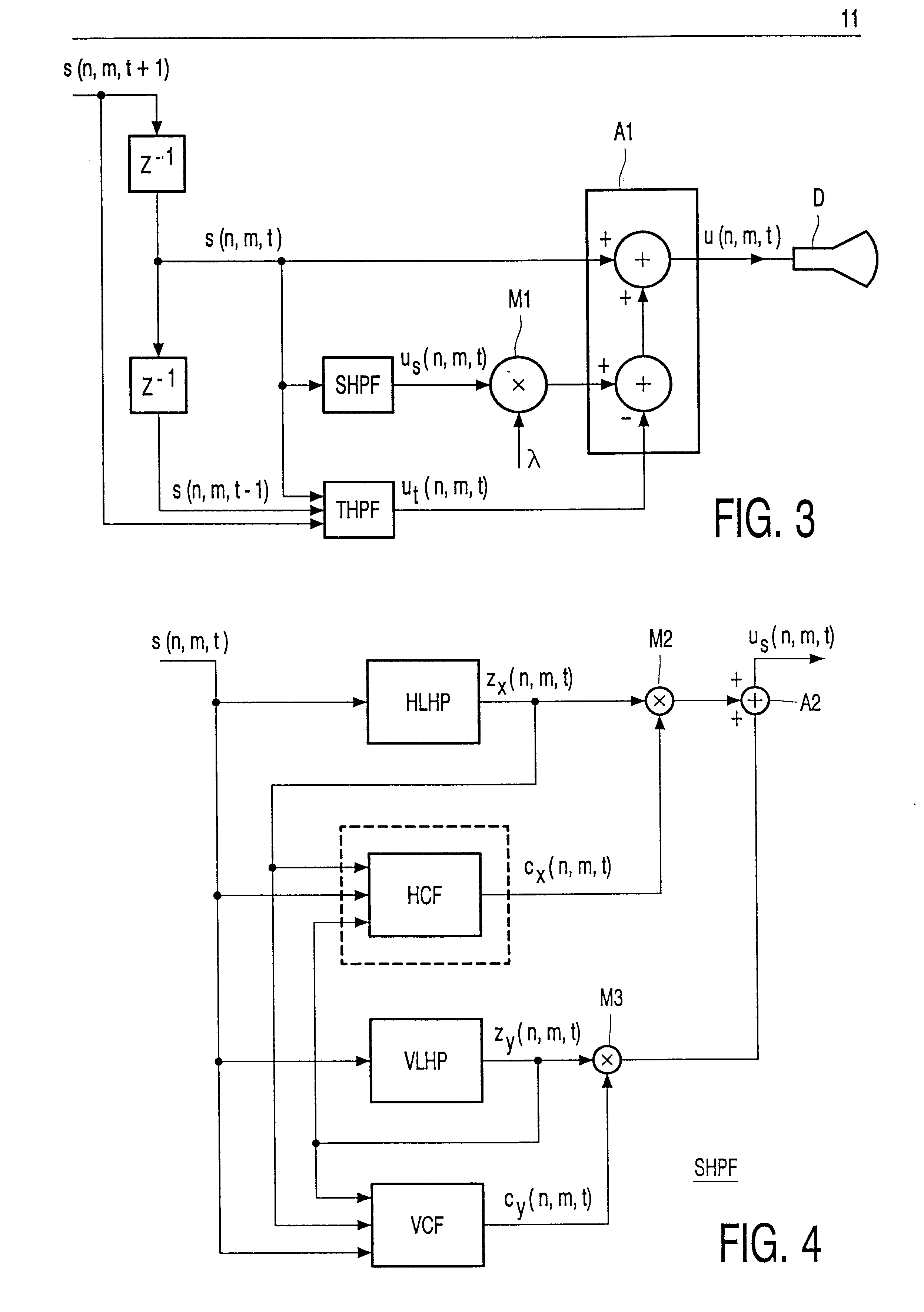Sharpness enhancement
a technology of enhancement and enhancement, applied in image enhancement, instruments, television systems, etc., can solve the problems of high computational complexity, unpleasant enhancement images with two types of artifacts, and attenuation of low contrast in sparsely populated histogram regions
- Summary
- Abstract
- Description
- Claims
- Application Information
AI Technical Summary
Problems solved by technology
Method used
Image
Examples
Embodiment Construction
In this description, we propose a sharpness enhancement technique for video applications, taking into account the fact that the images can be blocked. The enhancement is accomplished by adding a correction signal to the luminance edges in an Unsharp Masking-like way. However, a nonlinear function is used to generate such a correction signal, and both spatial and temporal information is used to deal with significant but thin details and with blocking artifacts; at the same time, a temporal component of the operator reduces the noise amplitude.
This description is organized as follows. In Sections 2 and 3, a detailed description of the new method for video and block-coded image sequences is presented. In Section 4, an algorithm is described for the automatic discrimination between video and block-coded image, and an operator is proposed that can be applied for both type of sequences. In Section 5, conclusions are given.
Basically, the enhancement is accomplished by adding overshoot to l...
PUM
 Login to View More
Login to View More Abstract
Description
Claims
Application Information
 Login to View More
Login to View More - R&D
- Intellectual Property
- Life Sciences
- Materials
- Tech Scout
- Unparalleled Data Quality
- Higher Quality Content
- 60% Fewer Hallucinations
Browse by: Latest US Patents, China's latest patents, Technical Efficacy Thesaurus, Application Domain, Technology Topic, Popular Technical Reports.
© 2025 PatSnap. All rights reserved.Legal|Privacy policy|Modern Slavery Act Transparency Statement|Sitemap|About US| Contact US: help@patsnap.com



